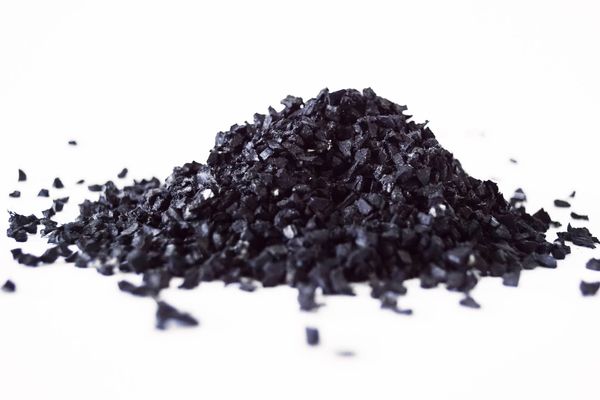The Carbon Black Industry in India: A Comprehensive Overview

The carbon black industry in India has been experiencing remarkable growth in recent years, driven by the expansion of various industrial sectors. Carbon black, a fine black powder produced by incomplete combustion of heavy petroleum products, has found widespread applications in rubber manufacturing, ink production, plastics, and more. In this article, we will delve into the various aspects of the carbon black industry in India, exploring its growth, challenges, and prospects.
Understanding Carbon Black Production
Carbon black is primarily produced through two processes: the furnace black process and the channel black process. In India, the furnace black process dominates the market, contributing significantly to the country’s carbon black production capacity.
Growth of the Carbon Black Industry
Rising Demand
The carbon black industry in India has witnessed a surge in demand over the past decade. With the increasing use of rubber in the automotive industry, the demand for carbon black as a reinforcing agent in tire manufacturing has grown substantially.
Expanding End-Use Industries
Apart from the automotive sector, carbon black is also used in the manufacturing of plastic products, inks, paints, and coatings. The expansion of these industries has further fueled the growth of the global carbon black market size.
Key Players in the Indian Carbon Black Industry
Several companies play a pivotal role in the carbon black industry in India. Some of the major players include Phillips Carbon Black Limited, Aditya Birla Carbon, and Himadri Speciality Chemicals Ltd. These companies are known for their high-quality carbon black products and have a significant market share.
Challenges Faced by the Industry
While the carbon black industry in India is on an upward trajectory, it faces certain challenges that need to be addressed for sustainable growth.
Environmental Concerns
The production of carbon black can have adverse environmental effects, including emissions of greenhouse gases. To combat this, the industry is focusing on adopting cleaner production technologies and adhering to stricter environmental regulations.
Competition from Imported Carbon Black
Indian manufacturers face competition from imported carbon black, which can sometimes be of higher quality. Domestic manufacturers need to continually innovate and maintain competitive pricing to counter this challenge.
Future Outlook
The future of the carbon black industry in India looks promising. The industry is expected to benefit from the growth of end-use sectors such as automotive, construction, and packaging. Additionally, advancements in technology will likely lead to more sustainable and eco-friendly carbon black production methods.
The carbon black industry in India is thriving, driven by increasing demand and expanding end-use sectors. Despite challenges, the industry is poised for continued growth and innovation.
Technological Advancements
The carbon black industry in India is not just growing in terms of demand but also in technological advancements. Manufacturers are investing in research and development to improve the quality of carbon black and develop innovative applications. With advancements in nanotechnology, there is a growing trend towards the development of specialized types of carbon black with unique properties, opening up new avenues for its utilization in cutting-edge industries like electronics and pharmaceuticals.
Export Opportunities
India’s carbon black industry is not only catering to domestic demand but is also making its mark on the global stage. Indian carbon black manufacturers have been exporting their products to various countries, benefiting from India’s strategic geographical location and cost-competitive production. As the industry continues to produce high-quality carbon black, it is likely to expand its global footprint and contribute to the country’s export revenue.
Sustainable Practices
In response to environmental concerns, the carbon black industry in India is increasingly adopting sustainable practices. Companies are exploring ways to reduce carbon emissions during the production process and minimize waste generation. The implementation of cleaner and more energy-efficient technologies is becoming a priority, aligning the industry with India’s commitment to environmental sustainability.
Government Support
The Indian government has recognized the importance of the carbon black industry and is providing support in terms of policies and incentives. Initiatives such as ‘Make in India’ and ‘Atmanirbhar Bharat’ have encouraged domestic manufacturing and have been beneficial for the carbon black industry. Additionally, the government’s focus on infrastructure development and the automotive sector is expected to boost the demand for carbon black, further driving its growth in the country.
The carbon black industry in India is on a dynamic growth trajectory, driven by technological advancements, export opportunities, sustainability efforts, and government support. As it continues to evolve and adapt to global market dynamics, it is poised to play a pivotal role in various industrial sectors, contributing to India’s economic development and competitiveness on the global stage.
- What are the primary applications of carbon black in India?
Carbon black is primarily used in India in the manufacturing of tires, plastics, inks, and paints.
- Which companies are the major players in the Indian carbon black industry?
Some of the key players in the industry include Phillips Carbon Black Limited, Aditya Birla Carbon, and Himadri Speciality Chemicals Ltd.
- How is the carbon black industry addressing environmental concerns?
The industry is adopting cleaner production technologies and complying with stricter environmental regulations to mitigate its impact.
- What is the growth potential for the carbon black industry in India?
The industry is expected to grow steadily, driven by the expansion of end-use sectors and technological advancements.




Good post! We will be linking to this particularly great post on our site. Keep up the great writing
Thank you so much dear